| Published
on 9
Oct
2012 |
All rights reserved.
|
|
|
American motoring
journalists seem to be very excited about the new Cadillac ATS as this
car promises dynamics to match or even beat BMW 3-Series. That would be
a big achievement if it really succeeds. However, not so amusing is the
means it used to achieve this goal. The ATS simply copied all the good
ideas that made the 3-Series so successful. This is immediately obvious
from its near identical size – its length, width and height are all
within 10 millimeters from the BMW. Its cab-rearward proportion,
longitudinally mounted engine, rear-wheel drive layout and 50:50 weight
distribution are exactly the winning formulas of the German car. Ditto
the suspensions consisting of MacPherson struts up front and multi-link
at the rear. Without its own innovations and character, it would be
difficult to get the same admiration as the BMW.
Anyway, it doesn't hurt to see how Cadillac created its most promising
European fighter yet. Compare with the existing CTS, the ATS is able
to take the challenge to higher level because it is given a dedicated
platform called "Alpha". This is a premium rear-drive platform with a
lot of good ingredients. Like the case of BMW, its double-pivot
MacPherson-strut front suspension introduces virtual axis to improve
camber control, while ball joints and hydraulic bushings isolate
unwanted forces from the steering without affecting road feel. The
5-link rear axle has anti-squat geometry, whereas its mounting subframe
is made of stiff yet lightweight hydroformed steel. Speaking of weight,
the Alpha platform has implemented a lot of measures to trim weight,
such as
aluminum bonnet, magnesium engine cradle, all alloy engines and
transmission case and rear suspension links with lightening holes. It
could have saved even more weight with aluminum rear suspensions, but
it opted not to do so for the benefit of weight distribution. Thanks to
putting the engine far back in the engine compartment and relocating
the
battery to the trunk, the ATS achieves near perfect weight distribution
– 50:50 with 2.0 turbo engine and manual transmission, 51:49 with
automatic box and 51.5:48.5 on the V6 model. This provides an excellent
basis for chassis development.
Then there are more goodies: ZF variable-ratio electrical power
steering, Magnetic Ride Control suspension (magnetorheological adaptive
dampers), mechanical limited slip differential, powerful Brembo brakes
and oversized Bridgestone rear tires measuring 255/35WR18. It sounds
more a rival of M3 than the regular 3-Series!
All these ingredients are wrapped within an Art-and-Science body shell
which looks pretty tasteful to my eyes. Inside, Cadillac's new CUE
infotainment system (see XTS) is definitely eye-catching. Its large
capacitive touch screen and iPhone-like icons look high-tech and user
friendly. The rest of the cabin looks up to the job, too.
Leather-wrapped dash top, lacquered console and chromed elements smell
expensive. You can't help thinking perhaps Cadillac really has a good
chance to beat its German rival this time around…
Unfortunately, if you go into details, you will find the American
challenger has many areas to improve. Despite of its same exterior
dimensions, the ATS cannot match BMW 3-Series for interior space. It is
not too bad up front, but the rear seat offers significantly less knee
room, foot room, head room and shoulder room, so a six-footer will be
difficult to seat comfortably behind another six-footer. That is
virtually an unforgivable sin for an American car, which is supposed to
offer
more space for the money. Moreover, access to the rear seat is made
difficult by the small door apertures and sloping C-pillars. The boot
is also significantly smaller than its rival's. The bottom line is: BMW
3-Series uses space and materials far more efficiently.
The CUE screen that looks good initially also falls short of
expectation once you start using it. While BMW's iDrive keeps hardware
knobs for most frequently used functions, the Cadillac User Experience
controls everything through navigating its touch-screen, so it wastes
your time and distracts your attention from the road when you need to
do simple things like adjusting audio volume or air-con. Besides,
touch-sensitive screen is not easy to control in the presence of shocks
and vibration. This mean it does not work as well as BMW's rotary knob
when the car is running. That is why most luxurious cars opt for
iDrive-style controls rather than touch-screen interface.
The 3 engines available to ATS are no match to the German camp, too.
The base 2.5-liter Ecotec direct-injected four-cylinder engine – see
Chevrolet Malibu in transverse form – produces 202 horsepower and 191
lbft of torque here. Not bad, but it feels underpowered in reality and
I seriously doubt its 0-60 mph claim of 7.5 seconds. Moreover, it does
not rev as sweet as a premium engine should.
It might be better to opt for the mid-range 2.0-liter Ecotec DI Turbo.
Its output figures of 272 hp and 260 lbft are eye-popping, actually
more than those offered by BMW 328i. Nevertheless, on the road it is
once again
disappointing. Although peak power is said to be available from 1700 to
5500 rpm, the power band feels narrower, with little fireworks below
2500 rpm and above 6000 rpm. Turbo lag at low rev is far more obvious
than the BMW engine, while at top end it feels tired. This engine
simply lacks
the flexibility and polished manner of its German rival. On the road,
acceleration figures proved that the ATS is considerably slower than
328i. Its Tremec 6-speed manual gearbox is balky to shift, adding
further to the embarrassing mismatch between specifications and
real-world performance.
This leaves the priciest 3.6-liter DI V6 and its compulsory 6-speed
Hydramatic box to be the only competitive choice. As always, the big V6
produces smooth, linear power and satisfying noise, if not the punch
and flexibility of
335i. The automatic transmission matches this manner with smooth and
well-judged shifts. Unfortunately, for its extra price and thirst the
V6 is unlikely to be a big seller.
That said, the ATS can claw back some points with its good handling.
Thanks to the aforementioned Brembo brakes, grippy rubbers and LSD, it
may teach the 3-Series a lesson or two on racing track. Its chassis
reacts to steering and throttle input more sharply, probably due to its
stiffer suspension setup. At the limit, it shows better chassis balance
and more willingness to change direction. Repeated high-speed stops
cannot upset the powerful brakes.
However, on regular roads, the Cadillac is not as sweet to drive as the
class-leader. No matter with regular dampers or magnetorheological
dampers, its ride is too firm, lacking the suppleness of BMW. The
alertness of its chassis response becomes a little nervous on less than
perfect roads. While the 3-Series can flow through B-roads beautifully,
the Cadillac suffers from a hardcore ride, more tire noise, a rougher
exhaust note and a steering which is quick but rather lifeless. The
various elements of its dynamic aspect do not come into harmony like
the BMW, especially the handling, ride, engine and gearbox. As a
result, it does not feel as intimate to drive.
It is nice to see Cadillac is finally upping its game to challenge the
established German premium brands head on. However, the challenge is
once again failed. Apart from more development into its ride, the ATS
needs better engines, better gearboxes, a more polished infotainment
system and more space in the cabin. Until then, it is only one of the
average players in the class, even though with unusually good handling.
|
Verdict:    (2.5 / 2.0 Turbo) /
(2.5 / 2.0 Turbo) /     (V6)
(V6) |
Published
on 8
Aug 2014
|
All rights reserved.
|
|
ATS Coupe
|
|
Unquestionably, Cadillac
ATS Coupe follows the template set by BMW 3-Series Coupe instead of the
new 4-Series, otherwise it would not have looked so close to the sedan.
Although Cadillac said it shares no exterior panels except the bonnet,
and it is slightly lower (by 30 mm) and wider (37 mm), it is still
unmistakably the 2-door version of the sedan. While the 4-Series looks
so sleek that it could be called a mini-6-Series, the ATS Coupe looks
quite fat and wind-blocking. Its waistline and boot appear to be
uncomfortably tall for a coupe, whereas the very shallow side windows
and glasshouse look out of proportion. Cadillac’s last CTS Coupe had
the same problems, but the ATS Coupe makes things worse with its more
compact dimensions.
Speaking of CTS Coupe, its position is now substituted by the smaller
car as Cadillac is repositioning its cars to aim directly at its German
rivals. Theoretically, the ATS is its 3-Series fighter, so the ATS
Coupe should rival 4-Series Coupe. Unfortunately, both cars run a
shorter wheelbase than their Munich counterparts, and they don’t use
space as efficiently either. As a result, the rear seats of ATS Coupe
is strictly for two persons no taller than 5ft 10in. Legroom is not a
big problem, but headroom is seriously hampered by the sloping rear
window. Shoulder room and seat comfort are also below par, as you can
see in the picture. Up front, the driver sit slightly lower than in the
sedan and faces the same dashboard. Unfortunately, that means the same
CUE infotainment system, too.
As expected, there is not much to separate the ATS Coupe and sedan in
mechanicals. It is powered by the same 2.0-liter turbo four with 272 hp
(though remapped to deliver 35 lbft more peak torque and a slightly
smoother power delivery) and 3.6-liter V6 with 321 hp. Both engines are
neither as free-revving nor as silky smooth as BMW motors. The
four-banger’s 6-speed manual gearbox has its gearshifts made slicker
but is still not exactly world-class. The V6’s compulsory 6-speed auto
is
no match for ZF 8-speed auto in all aspects. The ATS Coupe is also
heavier than equivalent 4-Series, so expect it trails the BMW by about
half a second from 0-60 mph.
Handling is better. In fact, it has always been the strength of ATS –
probably the only area it beats the 3-Series. Benefited by a slightly
lower center of gravity, wider tracks, stiffer suspension setting and
weightier tune of ZF power steering, the Coupe steers and corners even
better. Ride comfort does suffer a bit, but in case you opt for the
Magnetic Ride Control you can still enjoy a smooth ride on Touring
mode. However, chassis dynamics aside the ATS Coupe lags behind BMW in
almost every way. It isn’t as pretty as we had hoped, too, which is
probably the biggest problem to a coupe.
|
Verdict:    |
Published
on 6
May 2015
|
All rights reserved.
|
|
ATS-V
|
|
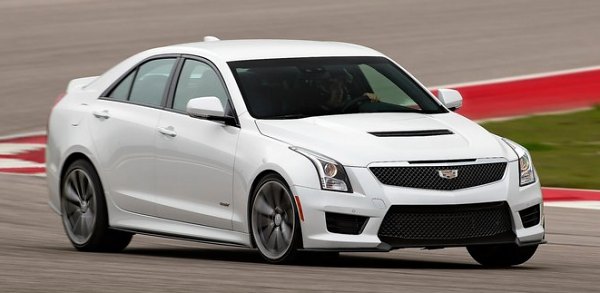
|
Whenever there is a BMW,
there will be an equivalent Cadillac. I suspect this is the strategy
taken by the luxury arm of General Motors. Since Cadillac had its
offerings realigned to better target at BMW, ATS becomes the
counterpart of 3-Series, while ATS Coupe fights against 4-Series coupe.
Naturally, the V-badge versions of the ATS sedan and coupe are to take
care of M3 and M4 respectively. It sounds a mission impossible, but
today GM is better equipped than ever to challenge the mighty BMWs. It
has some high-tech engines that you could not imagine 5 years back. It
has some excellent engineers and a world-class proofing ground to tune
ride and handling. Most important, thanks to a healthy balance sheet
now it has the resources and determination to challenge its German
rival. It even bought an M3 to work as development benchmark for ATS-V.
If you still have doubts, just look at the latest driver’s cars
developed by these people – Corvette Z06, Camaro ZL1 and Z/28, the new
CTS or the regular ATS. All are capable to embarrass BMW in driver
appeal.
You might expect the ATS-V to run an American V8 under its bonnet. To
our surprise (or disappointment), it is a 3.6-liter twin-turbo V6
adapted from the CTS Vsport and XTS Vsport. Why not V8? There are a
number of reasons: 1) the ATS-V is smaller and cheaper than the
forthcoming CTS-V, and this shall be reflected on its powertrain; 2) GM
does not have a high-tech V8 available at the moment, whereas the
pushrod V8 of Corvette is deemed to be unsuitable for the duty of
Cadillac; 3) BMW M3/M4 has already reverted to 6-cylinder motor, so
Cadillac thinks downsizing is the trend for the class. Unfortunately,
the new Mercedes-AMG C63 thinks otherwise…
In order to produce the power ATS-V needs, the twin-turbo V6 is
modified in many ways, including different intakes, lightweight
titanium connecting rods, forged steel crankshaft and, most important,
larger yet lighter turbines made of titanium alloy. The latter enable
boost pressure to be raised from 0.8 bar to 1.2 bar without adding
turbo lag. The result is 464 horesepower released at 5850 rpm, and 445
pound-foot of torque at 3500 rpm. It is more powerful than BMW, thanks
mostly to its extra capacity of 600 c.c., but its output is tuned to
deliver linearly across the rev band. While the BMW motor has its peak
torque of 406 lbft available from 1850 to 5500 rpm, the torque curve of
Cadillac looks more like coming from a normally aspirated engine.
Consequently, it doesn’t feel as explosive as the BMW, but the power is
easier to access and less likely to unsettle the handling.
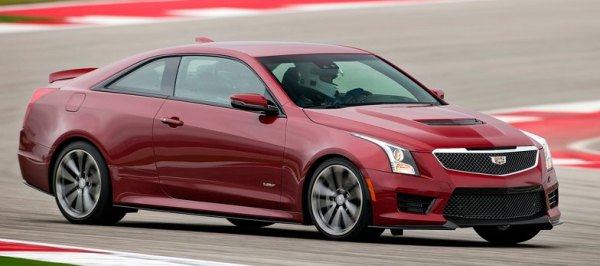
|
The power goes through a Tremec 6-speed manual or GM’s own 8-speed
automatic to the rear wheels. At an estimated 1680 kg, the baby
Cadillac is clearly overweight for its size. You can blame its larger
engine, bigger Brembo brakes and chassis reinforcement added under the
engine bay which lifts its rigidity by 25 percent. The M3/M4 is at
least 120 kg lighter, no wonder the first set of road test figures show
the Cadillac trailing the BMWs a little. It might be faster than Audi
RS5 or Lexus RC F, but AMG C63 S should leave it for dead.
On the road, the V6 powertrain is perhaps the least satisfying element
of the mechanical package. Like the new M3/M4, it is to be criticized
for lacking aural excitement compared with the 8-cylinder Mercedes,
Audi and Lexus, no matter volume or sound quality. Moreover, just like
any versions of the GM 3.6-liter V6, it doesn’t rev as smoothly as a
6-cylinder should. There is also a touch more turbo lag than the BMW
straight-6, despite of the titanium turbines. There is sufficient power
to be disposed and the linear power delivery is appreciable, but on the
flipside the V6 feels quite ordinary, not like a bespoke performance
engine. Both gearboxes are acceptable. The Tremec TR-6060, which comes
from the last generation CTS-V, is just as what you would expect from
this brand – a bit clunky and notchy. The GM automatic is smooth but
doesn’t respond as quickly as its dual-clutch rivals or ZF 8-speed
automatic. In short, the powertrain lacks polish.
However, you can’t rule out the ATS-V from the junior sports sedan
battle, because its handling is first class. BMW M3/M4 employs the same
ZF variable-ratio electrical power steering, but it never feels as
communicative as the Cadillac’s. Thanks must go to the stiffened front
subframe as well as replacing rubber bushings with rigid ball joints.
Like BMW, the Cadillac is very well balanced at 51:49, thanks partly to
the carbon-fiber bonnet and optimum location of engine. Compared with
lesser ATS models, its suspension employ wider tracks, thicker (hollow)
anti-roll bars, 50 percent stiff springs and 40 percent stiffer setting
of magnetorheological shock absorbers (i.e. Magentic Ride Control).
Traction is taken care by GM’s Performance Traction Management system
which is found also on Corvette Z06 or Camaro Z/28. It offers as many
as 5 levels of setting thus is more usable on track than the 3-settings
systems of its German rivals. Moreover, it works together with a
standard active differential to make power slide controllable. Driving
hard on track, you will find its turn-in, roadholding, body control,
balance and braking are all beyond criticism. Its linear power also
makes it easier to exploit the chassis. As a result, it feels even more
nimble than the BMW.
On public roads, the ATS-V duo is hampered slightly by a stiff
low-speed ride and lack of high-speed stability, something the German
always does better. In terms of day to day usability, its cramped rear
seats and junk-grade CUE infotainment system lose more marks. However,
to many buyers the Cadillac's weakest link is desirability – its
exterior design looks rough, cheap and dull beside the German cars,
especially the Coupe. Its interior isn't as well designed and built
either. Among the two, the sedan is worth more consideration thanks to
a more balanced proportion and more practicality.
|
Verdict:
ATS-V Sedan:    
ATS-V Coupe:   
|
Published
on 22
Oct 2020
|
All rights reserved.
|
|
CT4 and CT4-V
|
|
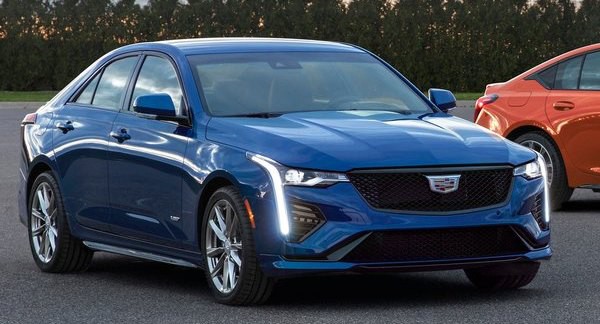
|
|
ATS
is reborn and realigned to rival cheaper German cars...
|
|
Built on the all-new
rear-drive Alpha platform, Cadillac ATS bore high expectations when it
was launched back in 2012. It was supposed to be America’s answer to
BMW 3-Series. Somehow, it turned out the other way. US sales peaked at
only 38,000 units in its first full production year, then slid
gradually to just over 10,000 units in 2018. By last year, it was
terminated. In total, only 150,000 units were built in 8 years, fewer
than a half-year sales of 3-Series globally. A tragedy.
The car itself was not that bad. In fact, its handling was quite
fabulous, and in ATS-V form, performance was super. However, the rest
of the package was flawed. The styling was slightly outdated. The
interior felt cheap and was packed with one of the poorest infotainment
systems ever made. Its cabin was also cramped by the standard of
American cars, even smaller than its German rivals, while pricing was
not low enough to justify all its shortcomings.
Surprisingly, while General Motors killed the flagship Cadillac CT6
without a second thought, it gives the baby Cadillac a second chance.
Now the car is facelifted and renamed to CT4. And most crucially, its
market positioning has been realigned to the league of BMW 2-Series
GranCoupe, Mercedes A-class sedan and CLA-class as well as Audi A3
sedan, eliminating its disadvantage in accommodation. Meanwhile, being
the only longitudinal-engined, rear-drive car in the class, it should
have an inherent advantage in handling, while the ATS’ longer wheelbase
should benefit ride comfort.
Then, the dreadful interior of ATS is completely revamped with a new
dashboard, better quality trims (though still no match with the new
German standard) and a vastly improved CUE infotainment system. The
rear seat remains cramped, but so is the BMW 2-Series GC. Suddenly,
everything turns to the favour of Cadillac.
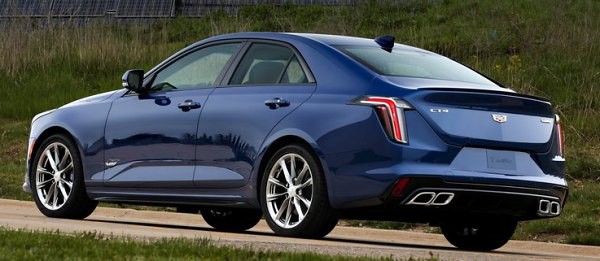
|
|
Chassis
still great, new engine is a let down.
|
|
The problem is, the ATS was costly to build. How to slash costs to
match with its front-wheel-drive-based and higher production volume
rivals? GM finds the answer from the engine bay. The ATS’ base engine,
a 2-liter turbo, has been retained, but it is detuned from 272 to 237
horsepower so that it allows the use of smaller front brakes. More
importantly, the premium version of CT4 has dropped the old car’s
3.6-liter V6, replacing it with a 2.7-liter four-cylinder turbo that
comes from a mass selling truck – Chevrolet Silverado !
In terms of output, the 2.7-liter four gives little to the V6. It
produces 310 hp instead of 321 hp, while torque output puts it in
strong advantage: some 350 lbft is available from 1500 to 4000 rpm,
versus the V6’s 275 lbft peak torque at 4800 rpm. It allows the CT4 to
sprint from rest to 60 mph in about 5 seconds, quicker than the old V6.
Moreover, despite its truck roots, the 2.7-liter is a perfectly modern
design, featuring not only alloy block, direct injection, integrated
exhaust manifolds and dual-continuous VVT but also a 3-stage variable
valve lift system whose low-lift cam profile enhances low-load economy
while the third cam profile shuts down 2 of those cylinders to save
fuel, or what GM calls Active Fuel Management. More remarkably, it is
the first production engine to adopt BorgWarner’s Dual-Volute
turbocharger, which is like a twin-scroll turbo, but has the 2 exhaust
ducts hit the turbine at opposite sides, keeping interference to the
minimum. No wonder it spools up quickly.
Unfortunately, there is a reason why nobody builds such a large
four-cylinder engine for passenger cars anymore: lack of refinement.
Start the 2.7, you will hear a diesel-like clatter. Stretch it, you
will find it runs out of steam after 5000 rpm, accompanied with a boomy
noise, although it redlines at 6000. The exhaust never sounds refined
from the mid-range. Smoothness is okay, since there are twin-balancer
shafts at the bottom of the block, but the automatic stop-start is less
than
smooth. Comparatively, the 10-speed automatic works perfectly.
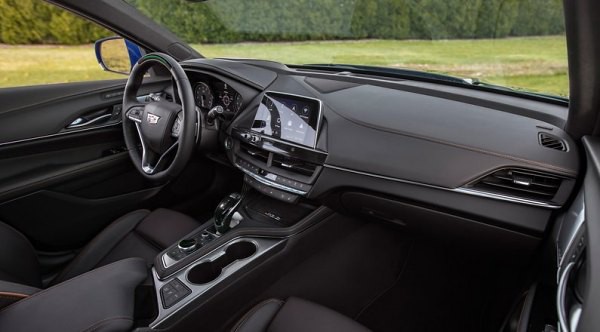
|
|
The
interior is completely revamped, but still falls short of great.
|
|
The CT4-V is more disappointing still. While the ATS-V employed a
464-horsepower 3.6 twin-turbo V6, the new car makes do with the same
2.7-liter turbo four-banger, albeit tuned to deliver 325 hp and 380
lbft. 0-60 sprint is lengthened from 3.8 to 4.5 seconds. The ton is
reached at 12 seconds instead of under 9. That’s about the difference
between a BMW M2 CS and M240i. Worse still, for an enthusiast
performer, the four-cylinder’s reluctance to rev is all the more
unacceptable. Lacking a manual gearbox is another. The V is dead.
Cadillac has altered little the chassis of ATS as it is still highly
competitive. The 50:50 balance still shines, so are the multi-link rear
suspension, the stiff chassis and, in the case of CT4-V, the Brembo
brakes, the mechanical LSD and the Magnetic Ride Control adaptive
dampers. In fact, the CT4-V has better handling than the likes of
Mercedes-AMG A35, BMW M235i Gran Coupe xDrive and Audi S3, thanks
mostly to its rear-drive chassis and better balance. GM also manages to
deliver better steering feel and precision than its European
counterparts. The Magnetic Ride Control suspension offers superior
composure and body control, making the CT4-V feels agile yet more
comfortable. To drive, nothing else in its class could beat it.
Sadly, such a great chassis is matched with an uninspiring engine and a
facelifted-but-you-won’t-call-it-any-prettier exterior. The price of
CT4-V is also too high, fails to justify its badge, its age and its
lower interior build standard.
Meanwhile, the lesser CT4 2.7 is not quite as good to drive, as its
passive suspension causes looser body control, the all-season tires
offer less grip, and the car generally understeers more. The least
powerful base car might be a better option.
Cadillac makes the CT4 out of the residual value of ATS. It thought a
cheaper engine and different marketing strategy could make a big
difference, but I doubt. In my opinion, it would be better to
concentrate your limited development budget to a single product with a
clear identity and purpose than two cars with unclear missions. Both
the CT4 and CT5 could face the same fate as their CT6 sister, and this
could be sooner than expected.
|
Verdict:   
|
Published
on 11
Sep 2021
|
All rights reserved.
|
|
CT4-V Blackwing
|
|
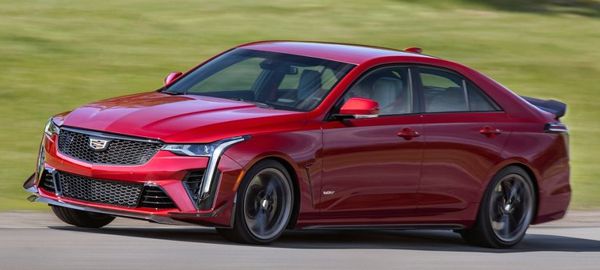
|
|
Detroit
wants to bow out the combustion engine era on a high with Blackwing.
|
|
Strange time. Cadillac said
it is going to phase out combustion engines soon, yet it introduces a
new performance label called Blackwing at this moment. Stranger still,
none of the Blackwing cars employ the engine that gave this name – the
quad-cam twin-turbo V8 debuted and died together with the short-lived
CT6-V. That’s how General Motors treats its investment: pours a lot of
money into the most sophisticated engine it has ever developed,
abandons it and leaves its name as the only residual asset.
So the new CT4-V Blackwing has no V8 mill under its bonnet. Admittedly,
it won’t fit even if it wished, because the ATS, or now CT4, has always
been a small car. Its market positioning is embarrassing – smaller and
cheaper than the likes of BMW 3-Series, Mercedes C-class and Audi A4,
but larger and more expensive than the 2-Series Gran Coupe, A-class
sedan, CLA-class and A3 sedan. But it has a rear-drive chassis, so
Cadillac thinks it is worth the extra cash.
The case of CT4-V Blackwing is better, because Cadillac can recycle the
3.6-liter twin-turbo V6 of its predecessor ATS-V, saving enormous money
and allowing it to be priced competitively against BMW M2 Competition,
Mercedes-AMG CLA45 and Audi RS3. It isn’t cheap at a starting price of
$60,000, but you need to add only a further $6,000 of carbon-fiber aero
packages, whereas the similarly equipped German rivals could easily
charge more than $70,000. A BMW M2 CS could even tops out $90K.
In terms of performance, the small Blackwing is strong enough. Even
without the 4-wheel traction afforded by its rivals, it is capable to
do 0-60 sprint in around 4 seconds – more precisely, GM claims 4.1
seconds for the 6-speed manual or 3.8 seconds for the 10-speed auto
(yes, 10 speeds!). Its 189 mph top speed far exceeds any rivals. Such
performance is not much of a surprise though, as the ATS-V was already
there. The new car has improved the V6 from 464 to 472 horsepower while
keeping 445 pound-foot of peak torque unchanged. It gains a little bit
weight, so performance is more or less unchanged.
The V6 might not be the most up-to-date performance engine, but you
cannot argue about its decent smoothness, linear delivery or throttle
response, especially when compared with a 4-cylinder tuned to 200
horsepower per liter. However, few V6 sounds good, and Cadillac’s is no
exception. It lacks the musical opera of BMW’s straight-six or the
characterful offbeat of Audi’s 5-pot, nor its exhaust has the crazy
explosion of AMG’s four-banger. Maybe better than the ATS-V, it still
sounds too dull for a performance engine.
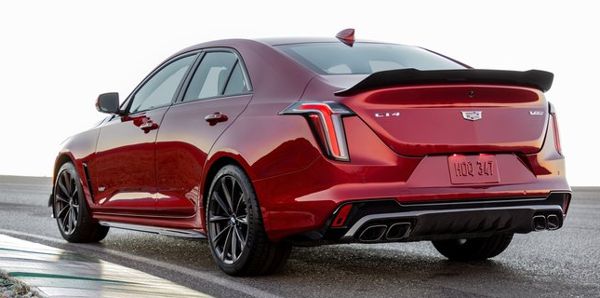
|
|
Great
though the Blackwing drives, it feels outdated in packaging.
|
|
Nevertheless, Cadillac has a trump card missing by all its rivals bar
BMW: a manual gearbox. The Tremec TR6060 6-speeder has a short and
precise shift quality and offers novel features like automatic
rev-matching and “no-lift shift” to speed up gearchange. Moreover, if
you order the manual, Cadillac will replace the steel connecting rods
in the V6 with titanium ones, so to reduce inertia and quicken throttle
response. No wonder it is a joy to shift. Comparative, the 10-speed
automatic is rather normal. You certainly won’t use paddles to shift
through 10 ratios by yourself.
The chassis is also very good, despite its age. The Alpha platform has
always been known for great handling, because it is fundamentally
correct: rear-wheel drive, near perfect weight distribution and a stiff
structure. These merits are not only carried over intact, but GM
continued improving it bit by bit, such as an updated Magnetic Ride
Control with new sensors hence quicker response. It also features the
latest version of Performance Traction Management and a central brain
that links with steering, damping, braking and powertrain. The new
Michelin Pilot Sport 4S tires with bespoke compounds improve grip
level. Electronic booster in the brakes improves pedal response and
offsets brake fade. A driving mode switch is added to the steering
wheel for easier access.
The result is a car that corners flatly yet soaks up bumps effectively.
Sure, it is a heavy car, so not quite as agile or sharp to turn as a
BMW M2 Competition or CS, but its steering is feelsome, its chassis
balance is good and predictable. Lots of grip and strong braking, too.
In short, it is a true driver’s car.
What it feels really dated is the overall packaging. Despite the
refresh made last year, the CT4 looks like a product set to retire
anytime soon. Blackwing adds some extra spoilers, but not enough to
save the game. Inside, the styling and quality gaps between itself and
rivals are even bigger, not to mention a tight rear seat. The only
upside is a larger rear door aperture that lets you enter that cramped
rear seat easier. For a car costing at least $60K, this is not enough.
The story of Cadillac is similar to that of Jaguar. Both build some
very sophisticated cars to rival the German, and beat them handsomely
in terms of handling and ride. Yet both fail massively in commercial
terms. On the contrary, Volvo and Lexus take a different route and find
success. Perhaps it is time to forget the old world. While Detroit
petrolheads love the idea of bowing out the combustion era with a bang
in the form of Blackwing, I guess it would be wiser to save the cash
and invest into a new electric performance label like Polestar. How
about Greenwing?
|
Verdict:    
|
|